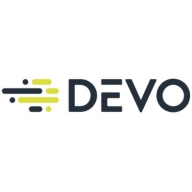

Fortinet FortiSIEM and Devo are competitive security information and event management solutions. Devo generally scores higher in terms of advanced analytics and scalability, while Fortinet FortiSIEM is praised for its pricing and support, making it attractive for budget-sensitive businesses.
Features: Fortinet FortiSIEM users frequently highlight its robust monitoring and alerting capabilities, customizable dashboards, and integration with a wide range of devices. Devo users value its real-time analytics, extensive data storage, and scalability. Although both have strong feature sets, Devo stands out for advanced data analytics and ease of handling large volumes of data.
Room for Improvement: Reviews suggest Fortinet FortiSIEM could enhance its user experience by simplifying its configuration process, improving reporting functionalities, and refining its interface. Devo could improve by providing more comprehensive documentation, better support for onboarding, and more integration options.
Ease of Deployment and Customer Service: Fortinet FortiSIEM is recognized for a straightforward deployment process with supportive customer service, yet some users note a steep learning curve. Devo's deployment is seamless, supported by prompt and effective customer service, offering more accessible onboarding and faster integration.
Pricing and ROI: Fortinet FortiSIEM is often deemed cost-effective with a favorable ROI by users, especially those in budget-sensitive environments. Devo, though more expensive, is considered to provide a higher ROI due to its advanced analytics and operational efficiencies. Customers generally agree Fortinet FortiSIEM offers good value for money, while Devo’s capabilities justify its higher cost.
The platform has resulted in time saved and reduces mean time to response, making it a great platform.
There is a knowledgeable, though small, team of support engineers around the world.
Local tech support is available, however, for more critical or technical issues, we depend on the OEM directly, especially when it comes to on-prem solutions.
The customer support for Fortinet FortiSIEM is excellent.
Fortinet FortiSIEM's scalability is excellent, and it is also easy to configure, maintain, and operate.
Fortinet FortiSIEM is highly scalable.
At any point in time, when network devices increase or there is a change in the infrastructure, we can add more workers and collectors to expand our infrastructure setup.
It stabilizes itself in an appropriate time, so its uptime is good.
Some stability issues occur, but Fortinet's technical support team provides assistance.
These issues may cause unusual errors and user interface issues.
Integrations with other sandboxes could be improved to better interpret data using AI and machine learning models.
Fortinet FortiSIEM should broaden its remediation part to include more features for incident management.
Enhancing the completeness of its APIs could aid in better external integrations.
Recently, they revised it to a subscription-based, all-inclusive license.
Setting it up for oneself as an enterprise-licensed product can be quite expensive.
Windows agent licenses cost around 3,000 Rupees per device per year.
The revised model is subscription-based and more flexible.
When they see a spike in a line chart for a failed login, which could be a true or false attempt, they can click that spike, and a table widget on the same active board instantly populates with raw logs of data for those specific failed logins.
I find the real-time monitoring and correlation capabilities effective for security alerts.
It provides extensive logging and record-keeping for internal networks, cloud applications, and services as well as perimeter physical network security.
Reliability and scalability have helped me in my work, especially because the license for Fortinet FortiSIEM is excellent from a cost perspective, and we can add more collectors as we expand.
| Product | Market Share (%) |
|---|---|
| Fortinet FortiSIEM | 2.8% |
| Devo | 1.1% |
| Other | 96.1% |
| Company Size | Count |
|---|---|
| Small Business | 8 |
| Midsize Enterprise | 4 |
| Large Enterprise | 11 |
| Company Size | Count |
|---|---|
| Small Business | 34 |
| Midsize Enterprise | 22 |
| Large Enterprise | 24 |
Devo is the only cloud-native logging and security analytics platform that releases the full potential of all your data to empower bold, confident action when it matters most. Only the Devo platform delivers the powerful combination of real-time visibility, high-performance analytics, scalability, multitenancy, and low TCO crucial for monitoring and securing business operations as enterprises accelerate their shift to the cloud.
FortiSIEM (formerly AccelOps 4) provides an actionable security intelligence platform to monitor security, performance and compliance through a single pane of glass.
Companies around the world use FortiSIEM for the following use cases:
We monitor all Security Information and Event Management (SIEM) reviews to prevent fraudulent reviews and keep review quality high. We do not post reviews by company employees or direct competitors. We validate each review for authenticity via cross-reference with LinkedIn, and personal follow-up with the reviewer when necessary.